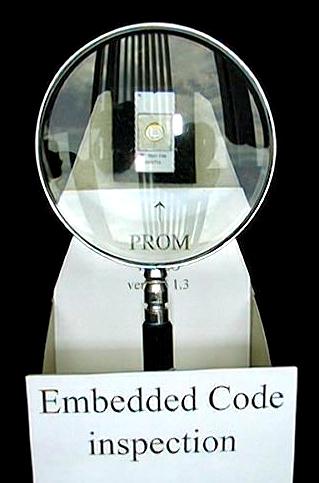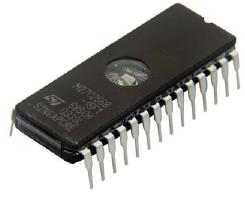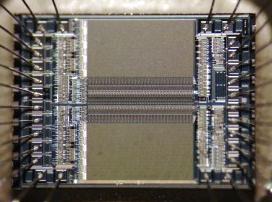 The below was part of a "Year 2000 Emergency Kit" that I displayed in my office in 1999. It was a commentary on all the hype suggesting that the "Y2K Problem" would cause the collapse of modern civilization on January 1, 2000.  "Embedded code" refers to computer programs written for the small microprocessors embedded in hardware devices. These were often contained in an integrated circuit called an "EPROM" (Erasable Programmable Read-Only Memory). In the technology of the time, these devices could be electronically "programmed" (that is, loaded with the code of the computer program). But they could also be erased for re-use if the program needed to be changed. They were actually erased by exposing the integrated circuit to ultraviolet light of a specified intensity, for a specified period of time. In order for the light to reach the integrated circuit sealed inside its package, the package had a quartz window in its top (the window had to be quartz because ordinary glass does not transmit ultraviolet light well). Thus, you could see the memory chip through the window. The engineering joke in my office display is the implication that one might read the code programmed into the chip by looking at it through a magnifying glass, which of course is impossible. What you are seeing above is an "EPROM" seen through a magnifying glass, in a package like the one below on the left (although of a different color), with its integrated circuit chip exposed through the round quartz window. The picture is larger than actual size - the legs of the package are 0.1 inches (2.54 mm) apart (this is a 28-pin "DIP", for "Dual In-line Package"). An EPROM chip as seen through the window is shown on the right, a good deal more enlarged - it's only about 5 by 7 millimeters in size.   Nowadays, non-volatile memory chips are both programmed and erased electronically, and of course they are very much larger in capacity. There's one inside the "SD-card" in your digital camera.   |